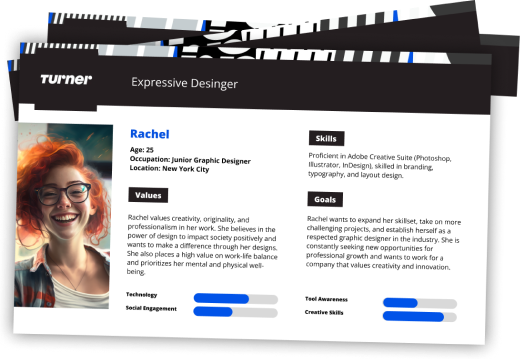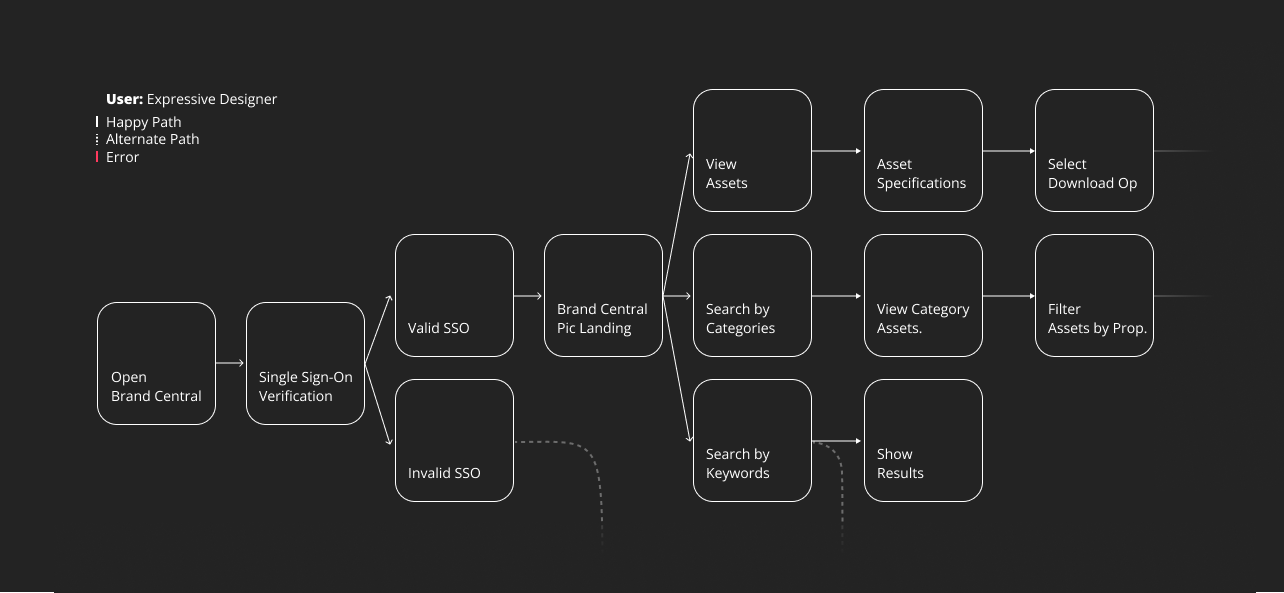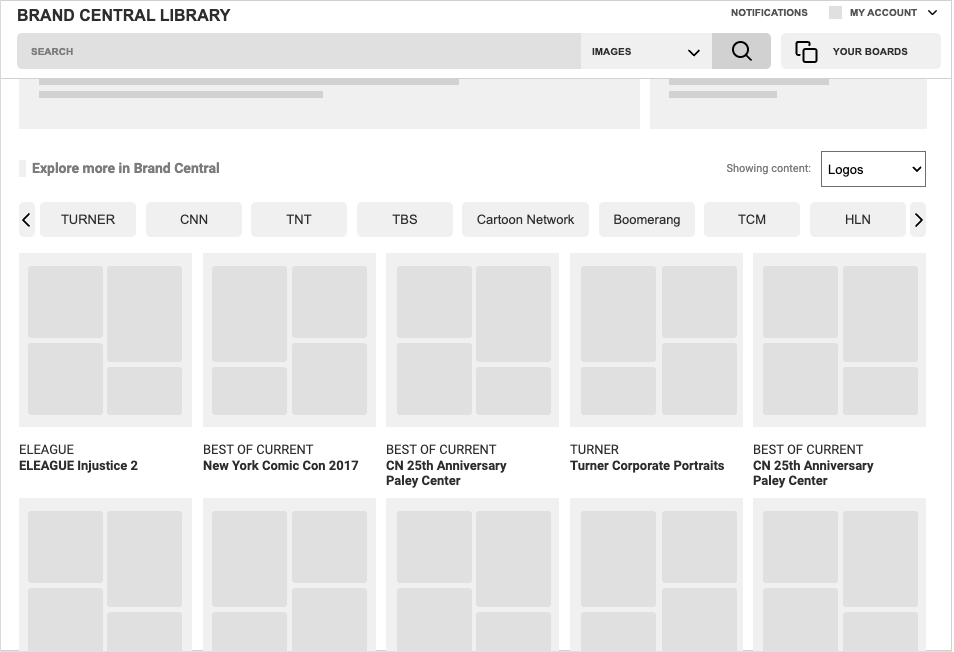Problem Definition
The problem being faced by the users of "Brand Central" from TURNER INC. was a confusing and difficult-to-use interface. The interface design has led to frustration and confusion among users, resulting in lost time and decreased efficiency. The complexity of the interface has made it challenging for users to navigate and complete their tasks effectively, leading to decreased productivity and a negative impact on their experience with the tool.
As a result, the users are struggling to achieve their desired outcomes and are left feeling frustrated and unsatisfied with the product. This presents a significant challenge for the company, as it is essential to provide a user-friendly and efficient tool to meet the needs of its customers. It is crucial to address this issue to improve the user experience and increase user satisfaction, which will ultimately lead to a more successful and profitable product.
User Flow
The user flow provided us with a visual representation of the steps users take to complete a task, from beginning to end. This helped us to understand the current user experience and identify any pain points or areas for improvement. The user flow allowed us to see the entire process from the user's perspective and made it easier to identify areas where the user experience could be improved.
Visual Design
The overall aesthetic of the website is clean and modern, with an emphasis on showcasing the images themselves. The website is optimized for both desktop and mobile devices, ensuring that employees can access the images they need no matter where they are.


